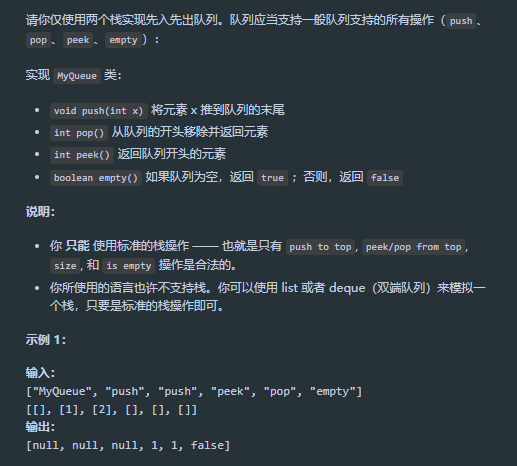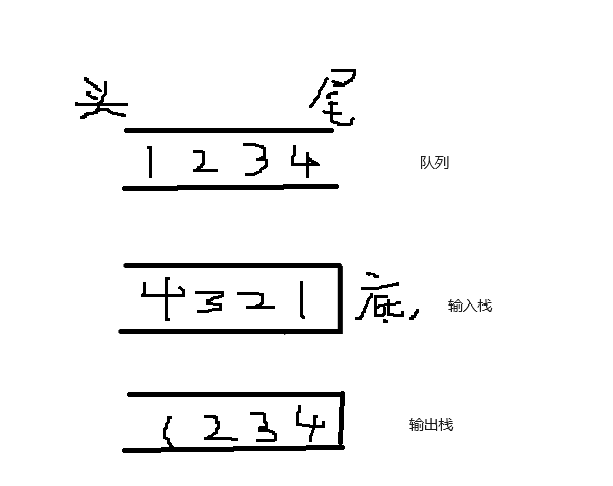题目

思路
使用两个栈(输入栈和输出栈)来模拟一个队列。
队列的push操作实现:直接将元素push到输入栈中。
队列的pop操作实现:队列是先入先出,将输入栈的元素全部pop到输出栈中,然后再由输出栈pop,这样就实现了先入先出。
举例:

队列的empty实现:如果只有入队操作的话,就只需要判断输入栈是否为空就行,如果有出队操作的话,只需判断输出栈是否为空就行。如果既有输入又有输出的话,就得判断输入栈和输出栈都不为空。
代码
import java.util.Stack;//leetcode submit region begin(Prohibit modification and deletion)
class MyQueue {Stack<Integer> stackIn;Stack<Integer> stackOut;public MyQueue() {stackIn = new Stack<>();stackOut = new Stack<>();}public void push(int x) {stackIn.push(x);}public int pop() {//如果输出栈非空,直接从输出栈pop就行if (!stackOut.isEmpty()) {return stackOut.pop();} else {dumpstackIn();return stackOut.pop();}}public int peek() {//如果输出栈非空,直接从输出栈pop就行if (!stackOut.isEmpty()) {return stackOut.peek();} else {dumpstackIn();return stackOut.peek();}}public boolean empty() {return stackOut.isEmpty() && stackIn.isEmpty();}//将输入栈的所有元素存到输出栈里private void dumpstackIn() {while (!stackIn.isEmpty()) {stackOut.push(stackIn.pop());}}
}/*** Your MyQueue object will be instantiated and called as such:* MyQueue obj = new MyQueue();* obj.push(x);* int param_2 = obj.pop();* int param_3 = obj.peek();* boolean param_4 = obj.empty();*/
//leetcode submit region end(Prohibit modification and deletion)
)

)
_IV 深入理解Hystrix断路器)













)
